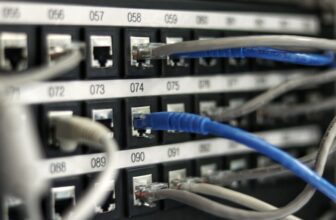Although the application of data center brings a certain profit to the enterprise and promotes the development of the enterprise, with the rapid development of the enterprise, the traditional data center has gradually failed to meet the development needs of the enterprise. Therefore, both operators and enterprises have begun to transform traditional data centers.
Since the birth of the Internet bubble and modern data centers in 2000, information technology has exploded in 2004. Google stock is priced at $85 a year and is now worth $1,500. Amazon was not even born in 1993, and today it is one of the most valuable companies in the world with Apple and Microsoft.
These data-dependent data centers are more widely known in the private sector than in the public sector, although most of them are owned or used by industry giants such as Microsoft, Google, Facebook, and Amazon.
Data centers are the way of the digital revolution, but little is known about the work of data centers, people and data centers.
This must change because modern business cases in data centers must address issues related to sustainability, security, regulation, and transparency while addressing the sustainability and governance of infrastructure-sensitive people across the technology supply chain. Also interested because they need more bandwidth, innovation and time to market.
Data security is a major factor
In this case, how does the data center maintain an orderly operation? Compared to cloud computing technology, data centers consume more energy, are limited by capacity, and face risk bottlenecks, poor service, and customer anger risk decision makers. How to reduce risk while maintaining service standards and customer satisfaction? What are the key drivers when retrofitting? Can future changes be prevented simply by restoring the data center?
As people expect from the information industry, data centers have sufficient facts and data to answer these questions and address pressing issues such as continuity and sustainability, and of course security and data privacy.
People are paying more and more attention to their data, not to mention their sustainability and carbon footprint. Regulators are also asking questions about the supervision, responsibility, and supervision of GDPR regulations. Without adequate oversight, people begin to value the future of data that requires a hard answer about which data controller is responsible for its management and where. Data centers that take steps to prevent these problems through tangible evidence will provide good services to investors.
It is important to ensure that the data center is located in a country where the physical location itself is not compromised. Therefore, you also need to make sure that you are legally safe. You need to choose a provider with a data center in a country with stable regulations. If you need legal recourse, you can do so.
Climate issues create new opportunities
The data center generates about 2% of the world’s greenhouse gases, which is at the same level as the aviation industry, so new ways to improve its environmental impact must be found. European countries such as the United Kingdom have only 2% of the remaining electricity capacity and need to carefully study the use of key energy supplies and provide power to technology companies.
Existing data center operators need to pay attention to the future direction of development and how its actions can adapt to a wider range of environmental issues. Microsoft, the industry leader at the forefront of change, has promised to provide 60% renewable energy to its data center by the end of 2019 and 70% renewable energy by 2023.
An astonishing example of radical thinking in data center technology is the use of oceans for natural cooling. Another Microsoft initiative is the Natick project, which deploys a small data center underwater near the Scottish coast. Many in the industry also see the future of modular data centers that can be deployed locally to provide storage and processing power.
By emphasizing forward-looking innovations in sensitive areas such as sustainability and climate change, the data center industry can use facts to offset disputes.
Data center transformation
The transformation of the data center brings a lot of complexity, the most important of which is to ensure security and stability.
In the past, the most important consideration in data center design and planning was over-provisioning of cooling and power capacity to meet future capacity needs, and customer concerns have raised questions about data center sustainability.
Therefore, the focus of the organization on the data center is to control the budget. The greatest value extracted from data center facilities is focused on the core mechanisms of the data center, installation, upgrades, mechanical structures, switchgear, high and low voltage facilities, air conditioning and heating. The data center replaces the server every three years and periodically replaces IT hardware, coolers, hot aisles, transformers, computer rooms, and air conditioning facilities (CRAC). Technicians conduct preliminary investigations and consultations, while engineers conduct in-depth investigations, provide solutions and professional advice to provide a better customer experience.




